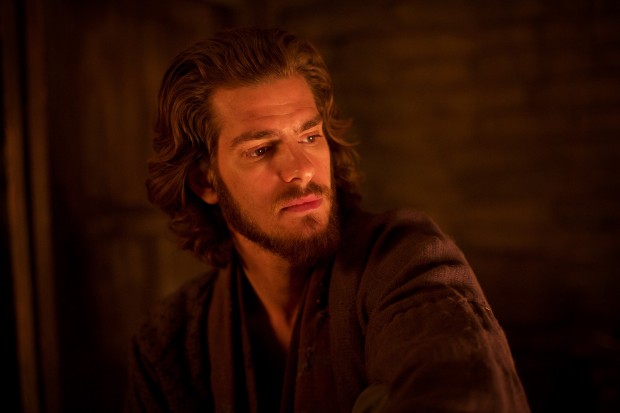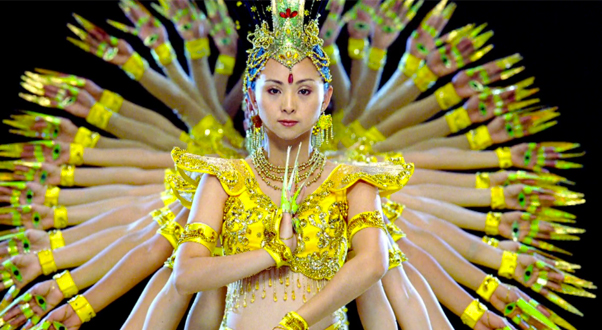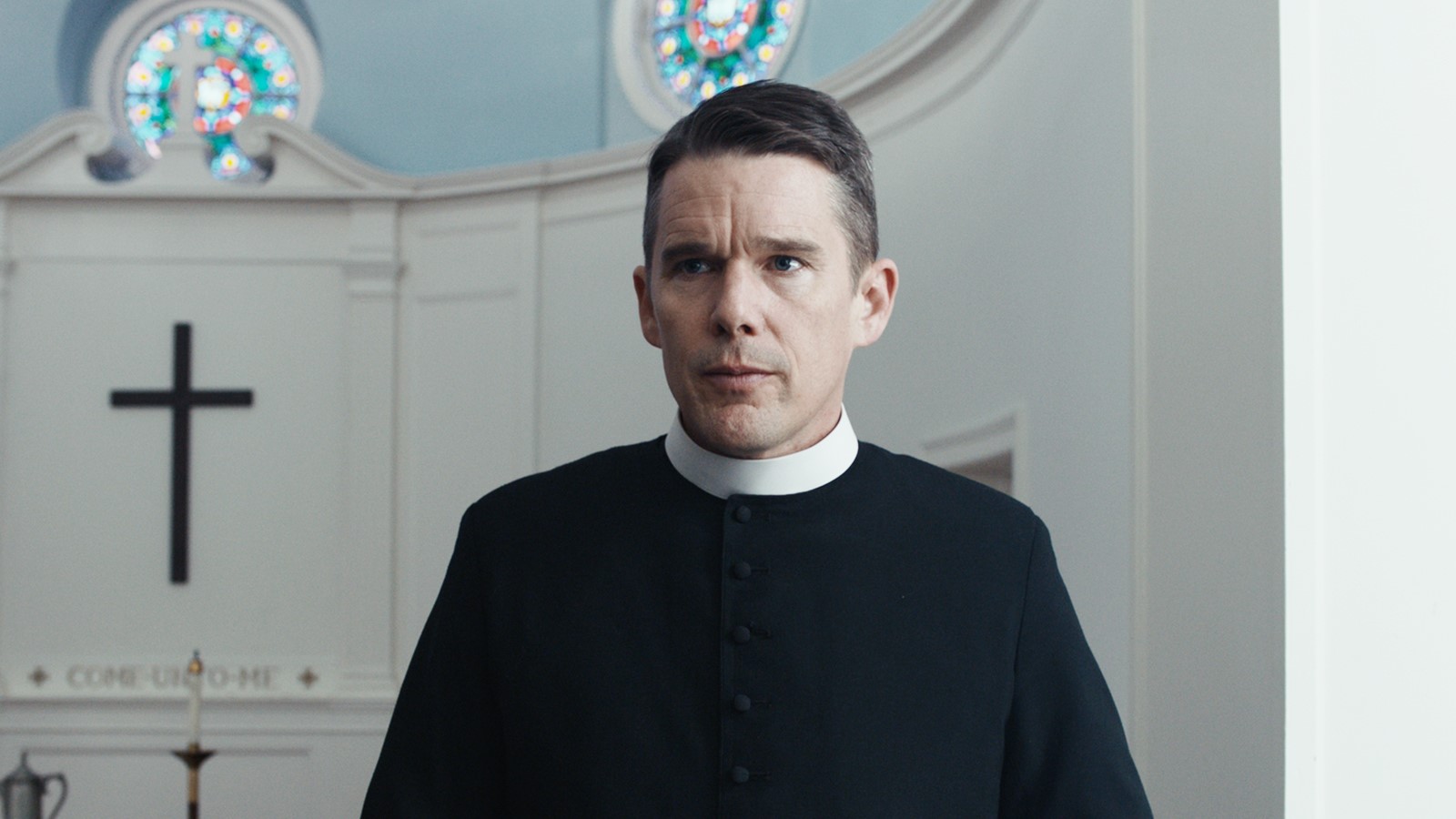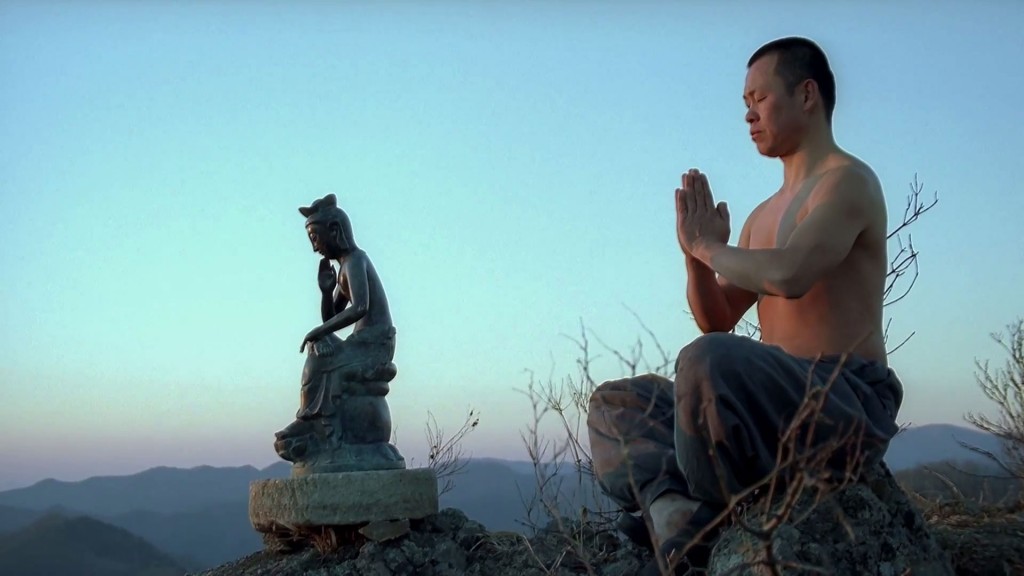5. Silence (2016) – Martin Scorsese

What it examines: Faith
In Scorsese’s modern masterpiece, two young Jesuit priests volunteer to leave Portugal for Japan in search of their mentor who, rumor has it, has apostatized (denied his faith) and adopted the culture and religion he set out to convert. They are convinced they can change his mind, but what these devout friends find waiting for them in Japan shatters all their preconceived notions. Most Japanese are in fact quite comfortable with their ancient religion and not eager to convert; what few Christians exist are under severe persecution and have to worship in secret.
By the time Andrew Garfield’s novice comes face to face with the apostate, his own faith has been deeply shaken by the conditions in Japan, just as his mentor’s must have been many years ago. Finding his God maddeningly silent as his moment of decision draws near, the priest must weigh a public betrayal of his faith which would allow him to continue spreading that faith in secret against a public affirmation which may cost not only his life, but also those of his friends.
The realization that saving the life of another might mean the loss of personal salvation becomes frighteningly real. When no divine voice offers an answer, can love for that divinity be separated from love for a friend a few feet away? Despite all of the doubt on display, it is faith which is at the heart of this profound passion project from Scorsese.
4. Samsara (2011) – Ron Fricke

What it examines: Ourselves
This visually stunning documentary is remarkable both for the sheer breadth of its scope and for the honesty of its gaze. The filmmakers turn an unflinching eye on a wide array of human activity – the good, the bad, and the ugly. Transitioning from images of inspired human creativity and architectual brilliance to scenes of gross waste and careless depravity, Samsara seamlessly shifts between the poles of human capacity.
The Oxford dictionary describes the word “samsara” as “the cycle of death and rebirth to which life in the material world is bound,” and the definition accurately sums up this film. While forcing the viewer to consider the self-destructive activity with which humanity continues to bind itself, it also implies that, without a change of course, the destructive cycle will worsen. However, the film simultaneously, though subtly, reminds us that real improvement is within our collective reach. In Samsara, we are treated to a hypnotic parade of gorgeous images – from intricately constructed temples, to bustling cities, to piles of garbage meters high in which the poor must find their daily sustenance. Samsara shows us ourselves, and we would be wise to learn from it.
3. First Reformed (2017) – Paul Schrader

What it examines: Transcendence
First Reformed is the latest in a line of timeless movie masterpieces dealing with faith and spirituality, and it happily acknowledges its debt to those classics while also making an important modern statment on the topics. The film’s main strength lies in its ability to perfectly capture the perennial existential struggle of the searching soul, while also endeavoring to rise above it. Director Paul Schrader is the author of the book “Transcendental style in film,” and few would be more qualified to tackle the subject in a film. Many themes run throughout First Reformed – faith, doubt, forgiveness – but we selected transcendence as the ribbon which ties the entire package together.
Ethan Hawke’s priest is a heartbroken, tired man numbing his physical and emotional pain with alcohol, and he has turned to the priesthood hoping to find spiritual answers and forgiveness. Through harsh penance and austerity, he continues to seek an elusive peace with God and with himself. But after a chance encounter with an environmental activist, his preoccupation transfers from spiritual salvation to social activism so easily that viewers are left to try and discern the difference for themselves. Meanwhile, his personal despair is growing into a threat to his very life from which even faith may fail to rescue him. But other forces are at work here as well, and we’re given just a hint of the sublime in spite of the dreary circumstances of the film – maybe just enough to lift us above the despair on display .
2. Spring, Summer, Autumn, Winter… and Spring (2003) – Kim Ki-duk

What it examines: The cyclical nature of life
On a floating monastery in a beautiful lake, a young Buddhist monk and his master live their austere, simple lives in Spring, Summer, Fall, Winter… and Spring. This film traces the life of the young monk as he grows into adulthood and old age, with each stage of his life represented by a season of the year. The wise master oversees the boy’s training with the kindness and patience of a parent, using the child’s failures and successes to teach valuable life lessons. But when the teenage boy falls in love for the first time, his carefully planned circle of life is threatened with disruption.
This film perfectly exemplifies Buddhist teaching and ideals in both its narrative structure and its message. By framing its story within the changing seasons of the year and of life, it reminds us of the impermanent yet recurring nature of each stage of existence. The great Gautama Buddha sought to help people understand why they suffer and how they can end their suffering: “All conditioned things are impermanent – when one sees this with wisdom, one turns away from suffering” he said.
Likewise, the master in Spring, Summer, Fall, Winter… and Spring knows and seeks to teach his student that the importance of every season should be embraced without attachment. Siddhārtha Gautama taught that by maintaining the proper perspective and welcoming each change in one’s life, we may avoid the sorrow that comes from clinging to either the joys or sorrows of any given season, and thereby achieve balance.
1. The Tree of Life (2011) – Terrence Malick

What it examines: “Nature and Grace”
For a film with ambitions to examine the entirety of existence, how can one narrow its theme down to a single topic? We’ve selected the words “nature” and “grace” from the film’s own narrative, because a movie with so clear and unique a voice of its own deserves to define itself. We’re told, as the mother of the young protagonist tells him, that there are two paths in life – the path of nature, represented by his authoritarian father, and the path of grace, shown by his submissive and loving mother.
The unconventional narrative structure of this film presents us with alternating perspectives of life as macrocosm and microcosm. We see the travails and tragedies of a small Texas family through the eyes of one of the sons reflecting on his youth. Interspersed with the drama of family life and adolescence are sublime sequences showing the power of nature, the vastness of the universe, and the complexity of evolution which immediately throw into perspective the seemingly minor circumstances of any individual. The Tree of Life goes big, and makes no apology for it; the result is a truly profound cinematic masterpiece.